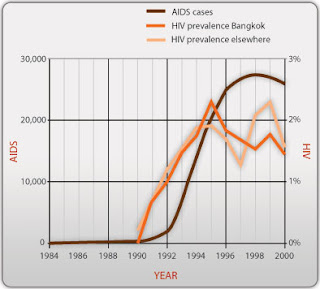A growing problem in the Thailand Social Structure is child prostitution. Prostitution has always been a part of Thai Culture, but it has never been this bad before. The people of Thailand do not consider prostitution evil. They have a traditional view on women, remaining from the traditional role they have been assigned in Thai Buddhism. The cultural attitudes of Thai men, and the consequences of the military presence, has resulted in a culture of recreational sex. The social turmoil after WWII planted the seed for prostitution. This issue is a growing concern of Thailand. As Thailand's economy continues to take a turn for the worst, more and more families are in poverty. The Thai government has found that since tourism is a quick way to earn foreign dollars it cannot easily stop this lucrative, degrading business. A beautiful country, beautiful women, and inexpensive living enables prostitution to thrive more than ever. Child prostitution becomes more and more common. Many families sell their children into prostitution for money, while others are tricked into selling their kids into it. Other kids think they can help improve their family's lives if they go into prostitution. And because of this, there are more than 800,000 children bought and sold into prostitution.
Where do they go from here?
Really, the only place they can go from here is up. They need to reform their social structure, and put in a government that will put a stop to all of this. I think this problem stems from their lack of a good social structure. Whether it means limiting tourism, or educating families and young women on the effects of prostitution. They can educate and make families aware of how people might try to trick their young children into prostitution. The government needs to start setting laws, and protecting these children from an awful life.

